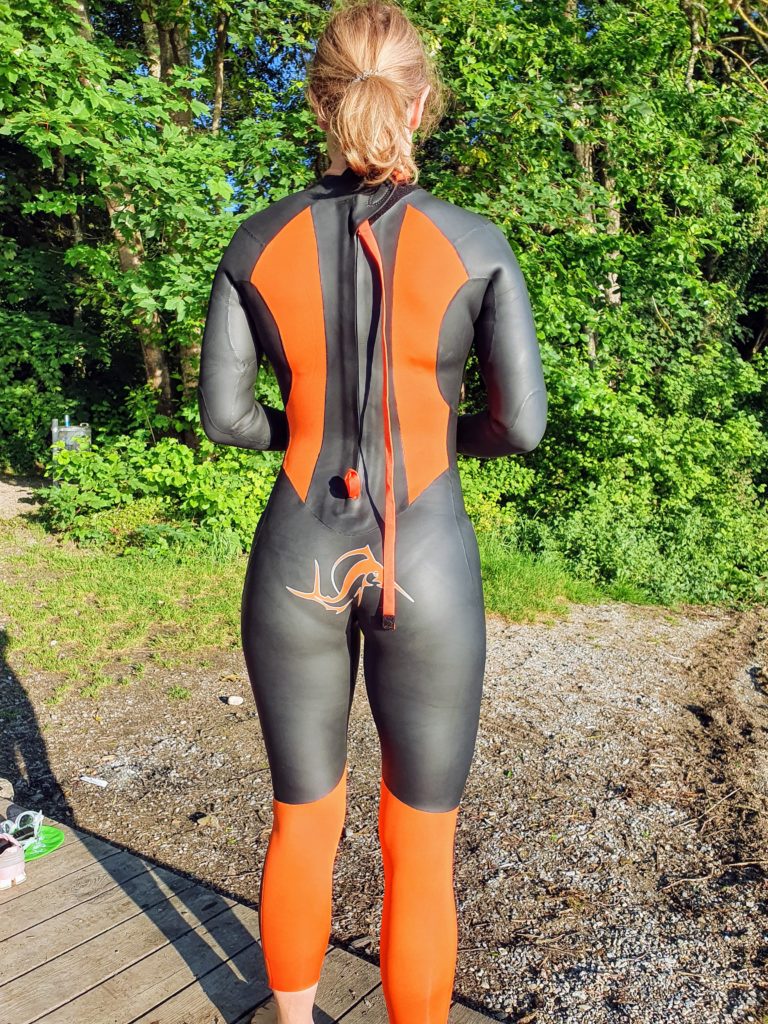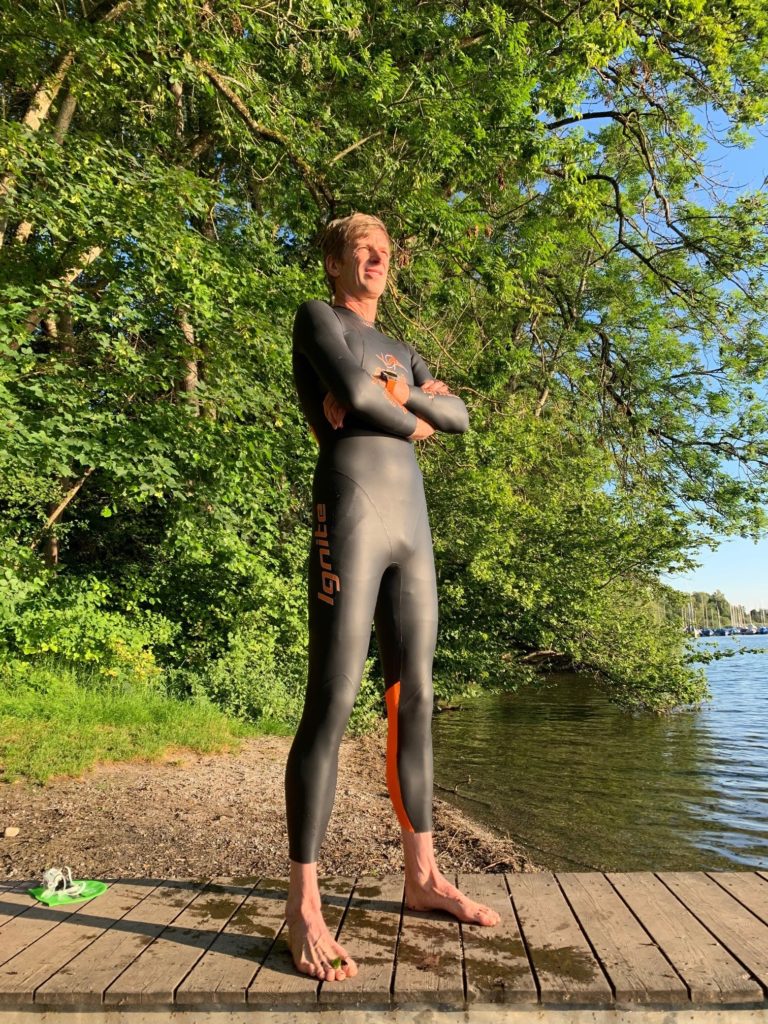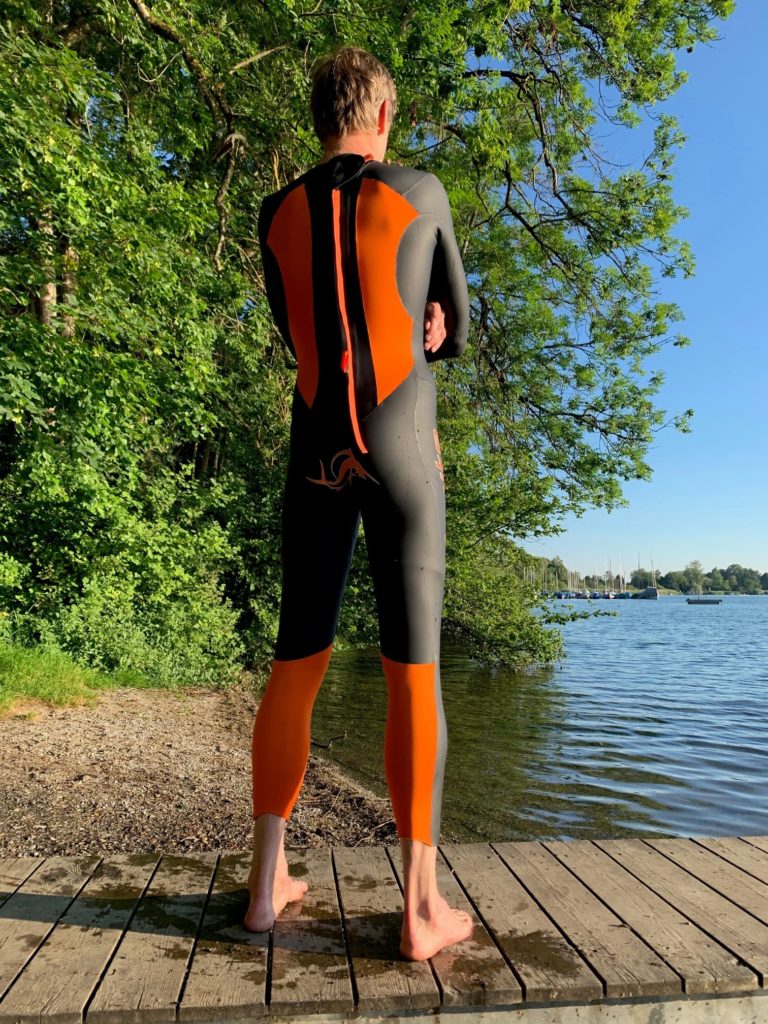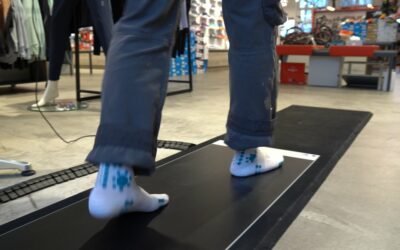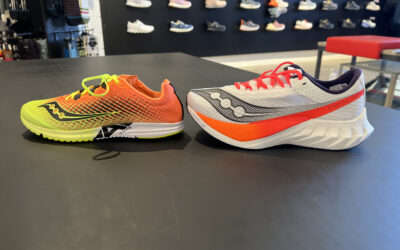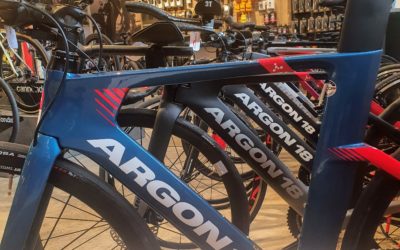With the Ignite, the leading wetsuit manufacturer Sailfish around Jan Sibbersen is launching a brand new swimming neoprene. We have put the suit through its paces and show you who it is suitable for and for whom it is less suitable First of all, the Ignite is a very successful suit that fills an important gap. But it also has its limits.
Technical details
Let’s start with the main features of the Ignite: In addition to two patches on the back and on the calves, the high-quality SCS No. 39 neoprene was processed. This has very good sliding properties and also convinces haptic, because it feels extremely supple. As usual, the interior material at Sailfish is very flexible and high-quality in all directions. The processing is also of high quality. Together with the slightly thinner neoprene (shoulder/arms 1.5 mm, chest/upper/lower leg 3 mm), this results in a suit that is certainly one of the most flexible on the market for this price range. The mentioned unsealed neoprene parts on the back and calves are kept in bright orange. These massively increase the visibility of swimming. A very intelligent technical feature is the loop at the bottom of the zipper. On the one hand, it makes it much easier to close the zipper. In addition, the floating buoy can be attached directly to the loop and thus disturbs even less. One last new feature of the Ignite is the straight neck closure. It is nicely tight, but does not disturb or scrub at all. This is also a successful new detail.
Entry level, fit
What immediately stands out: The Ignite is extremely easy to tighten. Our test suit was size S, which according to the Sailfish size table is clearly at the lower end for me. But even this rather “too small” suit seals almost by itself. The fit is very reminiscent of one of the classic triathlon wetsuits and has little in common with a simpler open water suit: full of fitting, hardly throwing wrinkles. As if poured. The loop under the zipper is also worth a lot: the suit can be closed very well without help from others. The first impression shows: Many amateur swimmers have been waiting for this suit.
Swimming performance
Now into the water, which with about 20 degrees (at an air temperature of 15 degrees) is quite pleasant, but without a suit – at least for me – would not allow a longer open water excursion. The first strokes feel surprisingly good. The flex on the arms is outstanding for such a suit. Even if the triathlon neoprene from Sailfish are more flexible in comparison. As a comparison – which is admittedly somewhat unfair – serves me the Ultimate of Sailfish. There are still some space in between in terms of flexibility. But once again, the Ignite is a flexible suit that wasn’t tiring at all on our more than 2 kilometer long test swim. However, the buoyancy is significantly lower than with a classic triathlon neoprene, the effort for the same speed accordingly higher without having measured with the stopwatch. But that shouldn’t bother most amateur swimmers who don’t have the suit in competition.
The thin suit also brings another advantage: Breast stroke is also possible without any problems, even over longer distances. The suit thus closes an important gap in the market for amateur swimmers. And speaks from the heart of some “bad” swimmers also in the triathlon area.
Disadvantages? Yes, there are.
The open water shows that the flexible, thin neoprene also has its limits. The suit “pumps” a bit, probably also lets some water in over the unsealed neoprene inserts in the back area. This does not bother very much, but reduces the insulation effect and certainly does not make the suit faster. Especially at low water temperatures I would not recommend this suit. But: For temperatures from about 17/18 degrees, the Ignite is THE ideal wetsuit for me. I noticed this already when I was dressed, but also after a few hundred meters in the water. But I don’t see the suit for the competition. Too little buoyancy for most of us, too little isolation and too muchloss of speed (even the practical loop at the back certainly does not contribute to more pace). In addition, the slightly reduced buoyancy also gives less safety. Although I stay with the Ignite lying on the back already at the water surface, but with the Ultimate even the toes look out of the water, which is definitely not possible with the Ignite – at least with me 😉
Conclusion
All in all the perfect suit for all those who are looking for a training wetsuit, which is practical in handling, flexible in the arm area, also other styles as crawl are possible and it is clearly visible. And to those who don’t care if the suit doesn’t give quite as much buoyancy. There are certainly more suitable suits for colder temperatures and competitions.

